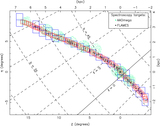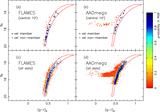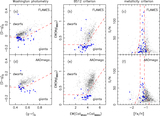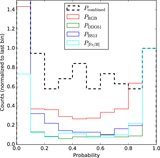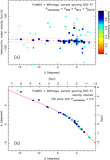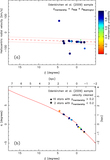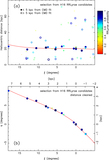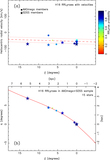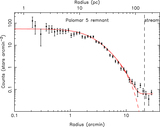Image Details
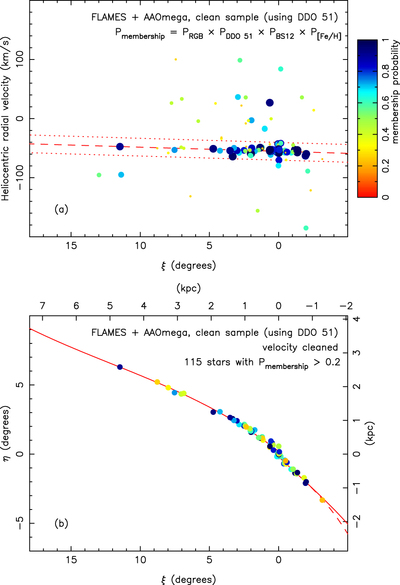
Caption: Figure 5.
(a) Heliocentric velocity as a function of standard coordinate ξ. All stars have been selected to be plausible Palomar 5 members (probability ﹩{P}_{\mathrm{membership}}\gt 0.2﹩) and to have velocity uncertainties better than ﹩5\,\mathrm{km}\,{{\rm{s}}}^{-1}﹩. The membership probability of each star is shown in the color code as well as by the size of the circle and is calculated from the product of the probabilities of the star belonging to the RGB, being a giant according to the Washington photometry criterion, being a giant according to the Battaglia & Starkenburg (2012) criterion, and being a member according to its metallicity. We have fitted a straight-line model to these data, using the “conservative formulation” of Sivia & Skilling (2006) to automatically reject outliers; the corresponding fit is shown with a dashed line, while the dotted lines show an interval of ﹩\pm 15\,\mathrm{km}\,{{\rm{s}}}^{-1}﹩ around this fit. (b) Sky positions of probable Palomar 5 member stars. The sample is the same as that of panel (a), but is now curtailed to the region within ﹩\pm 15\,\mathrm{km}\,{{\rm{s}}}^{-1}﹩ of the fitted gradient (between the dotted lines in that diagram). For comparison, in red, we have superimposed the cubic fit to the matched-filter map presented in Paper I. These high-likelihood spectroscopic members follow very closely the track of the photometric stream. The color-coding of the points is identical to that of panel (a), marking membership probability.
Copyright and Terms & Conditions
© 2017. The American Astronomical Society. All rights reserved.


